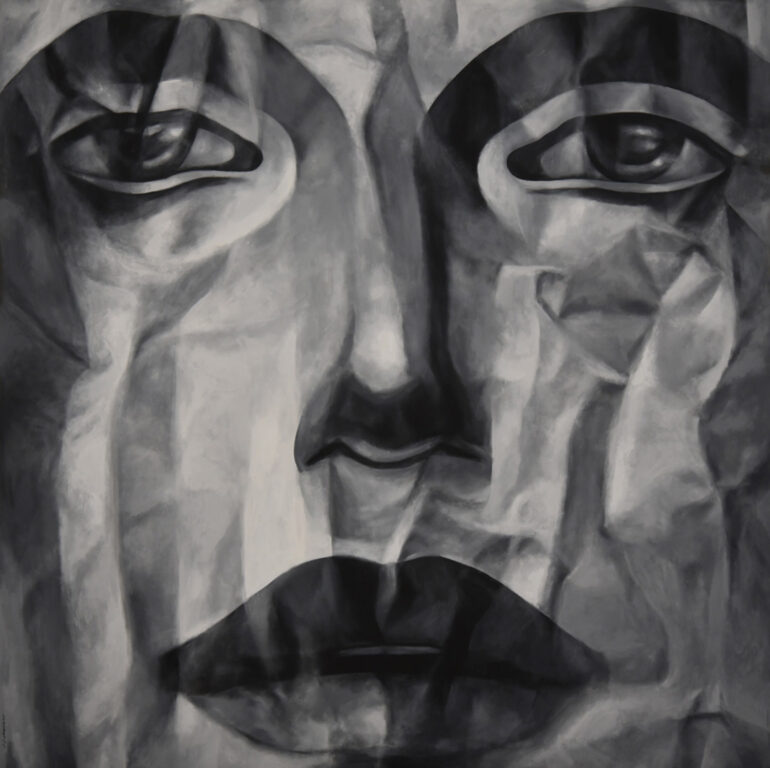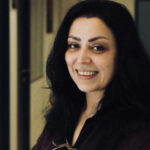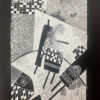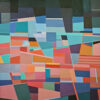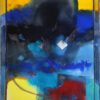- Titles play a word game, more than an art game
- Simplicity resides within me as a person before it resides in my painting
- Time Passing disproves the absolute recurrence hypothesis
- The non-concept defines many of our artistic preferences
“A photographer holding an imaginary camera, taking a picture after another of the passing moments, which in sum represent time”, Safwan Dahoul uses this perception to share his artistic experience with us. The experience that has always been able to raise questions and provoke curiosity, seeking to explore the stories behind these faces. We can also explore the dialectic of recurrence in his artwork, the absence of color, the residing of simplicity, yet with a complicated quiddity. His painting provides us with a distinct concept, without excluding other perspectives, since a different interpretation might carry an element of amazement for him, about which we read here…
Safwan Dahoul: A “Dream” With Hints of a Country
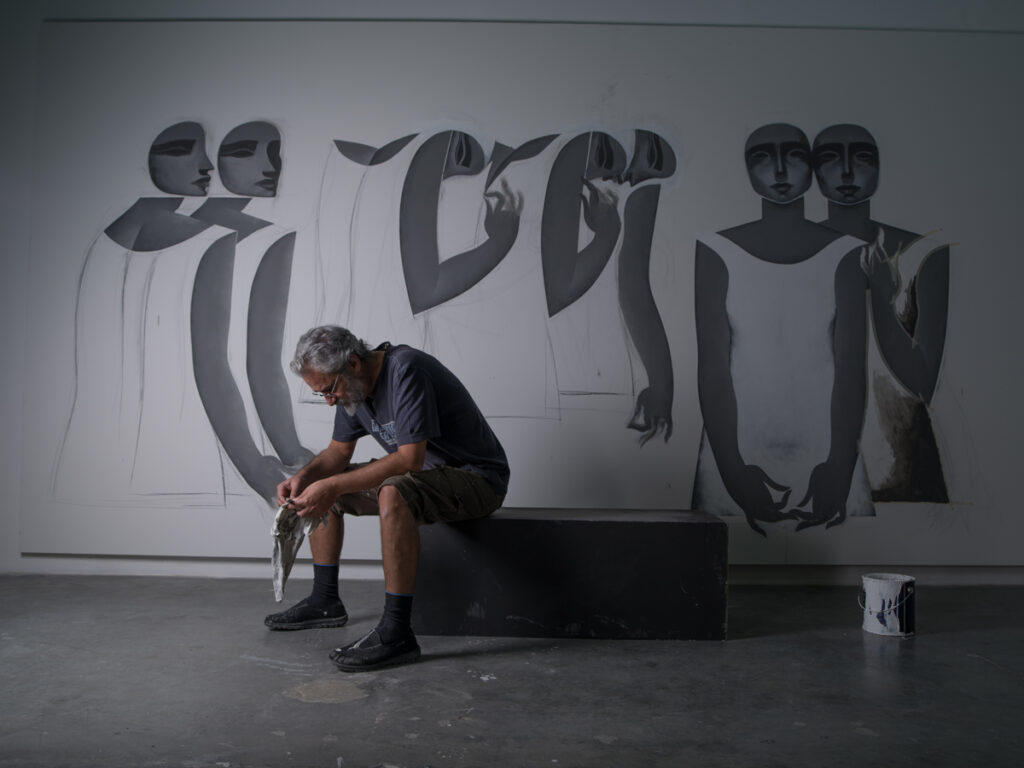

The title of the exhibition is a sensitive subject for the artist, this could be attributed to the connection with language. So, why did you choose the title “awakening” in your last exhibition, after years of “dream”?
From the beginning, “Dream” was the broader headline that I committed to, with some changes sometimes, but the change in the last exhibition was radical.
The “Dream” was associated with an old dream of mine to hold a whole exhibition with one painting. The exhibition was one face recurring over and over. However, at each time, a new story is told by this face, which I consider a country more than it is a face.
I believe that the “Title” plays a word game, more than it is an art game. It is a mere suggestive scene for the viewer, but it could also be a clue to read the painting. It is like a pretext for the artist to introduce his exhibition, but for me, I wish the exhibition would be untitled.
There is a side debate in the art and critic world about whether the artist has to introduce his artwork and explain it. This is often answered by how the art necessity came in the first place to compensate for the limitedness of language, how do you perceive this issue?
For me, I always lack the ability to explain my painting. One reason is that I think it is so simple that it needs no further explanation, neither for the visuals, nor for the topic. Another reason is that I see, many times, other explanations for my paintings that are more important than mine.
For me, the viewer is an equal and a partner in my painting, and he has the right to explain it the way he sees it. I might just say that my painting is a symbol, not a multi-element façade, as every painting tells a story
Speaking about simplicity, which we can describe as the “Challenging ease” in art, we must take a moment to discuss the concept that is challenging yet simple in your artworks.
For me, I think of the artwork, was it simple or leaning towards complexity, as a language. When this language is fluently spoken, with no problems in regards to diacritics and particles, i.e. when the language is straightforward and can be easily communicated to the other person, it makes up the passing ticket for any work of art, regardless of the style.
However, on a personal level, I believe that simplicity resides within me as a person before it resides within my painting. It is the method I’ve went with in my life since I was little, with no clear intention of mine; I didn’t have to pretend and I didn’t have major reasons to justify it. I don’t think any other approach would be a fit for me as it is the destination I belong to, and no other method could feel as right.
From another perspective, I can say that simplicity is a complicated concept in itself. It is not easy to convey an idea with as few details as possible. That’s why it is called challenging easiness, and it is indeed. It requires so much effort so that it is simple but not easy.
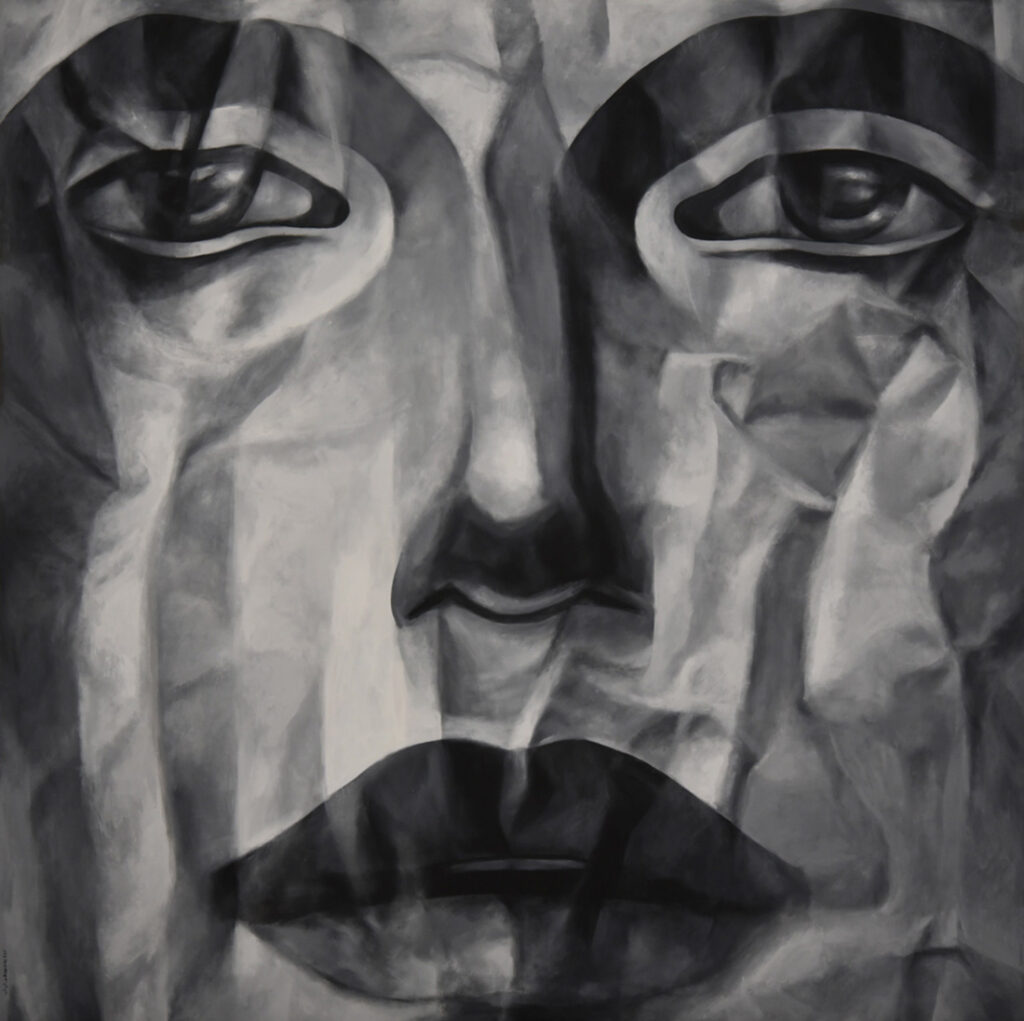
Now speaking of “recurrence” which is a concept that you purposefully utilized in your artistic experience, as it became a necessity to understand it, where did all these faces come from?
I would say, just to lay it out, that from an inner perspective, I see myself as a photographer more than a painter. However, this painter is holding an imaginary camera (not a physical one). This way, I think of myself as if I’m documenting someone’s daily life, from a set point. The moments pass, and they in sum constitute time, as every moment differs from the one before so there is no recurrence. We believe that time passes, and the person can no longer be the same, and so does a painting, especially when you talk about time.
However, this passing time is actually the trace that you have left behind, thus leading to art aesthetics. When we consider the ancient arts of all the civilizations that lived on this planet, we can actually see the traces they left behind which relate to the time they lived in. Today, we’re in the year 2022, and I don’t know how much longer we will continue, and the traces we leave behind belong to the time we have lived, thus becoming a living witness documenting this part of history.
On a personal level, time does concern me. When I go back to my photographs from different times, I wonder if I was still the same person or if I’ve become another. Everything changes with time, as time is in constant motion that gives a different product each time, for the better or for the worse. This is why the resource of time carries such importance for the artist, whether speaking about what’s happening in the whole world or about what’s happening in my country. I try to convey this when I create my artworks that are witnesses to this current period of time. This led me to create some artworks that differ from the ones I used to create in the past. Eleven years ago, I would’ve never thought of painting a face split into two halves. Today, I can. The reason for this is the time that has passed, thus providing us with new perspectives.
Also, speaking of recurrence, we might bring up “Rembrandt” who created more than 40 self-portraits. When contemplating this experience and its relevance to his life, we find that those portraits were in response to his wife and kids passing away. He was trying to document the changes that were occurring over time. It might be difficult to explain what was on his mind, but we can safely say that it was different, each time.
With time, your relationship with colors has shrunk, you even mentioned at one time, when you were asked about them, that you no longer see colors. Would you please tell us about this degrading relationship towards the limitedness of colors?
Sometimes things happen, with no intention of us. This is what happened to me, as I’ve never thought or actively taken the decision to lessen colors in my painting. This could be attributed to the impact of studying and science, but there is a hidden aspect, beyond our comprehension. It might be related to the subconscious mind; when it takes us to a place with the least amount of colors, we need to try. This is what I did, indeed, and I’ve found that this is what I actually want. Many things in my life happened in accidence, not by active conscious decision.
One time, I was speaking to a friend of mine, Artist Mahmoud Jelelati – May he rest in peace – and he told me that something is missing in my painting, and he didn’t mean to criticize, he was just telling me how he felt. Until one time, I drew a big-sized painting, and he told me that the thing that was missing was space, meaning that my work needed a big space. This was one of the most significant remarks that I’ve ever received. When I increased the painting space, I was able to forego thinking of the body and other elements. The shape gained its own formation, and its own sections with more angles and bigger space. It also gained a different value than the one of smaller artworks. This happened by accident, and the same thing happened with colors. I felt it was just right when I used fewer colors, but it was not my intention, and I didn’t know if it would last for long or how long would it continue. Fifteen years have passed, and I’m continuing to use the least amount of colors, and I’m hoping I could even use fewer gradients of colors.
What is a “Dream” to you?
It is nothing more than a game. A game that we know isn’t logical, yet we keep following it because it gets interesting. However, to be honest, I don’t have dreams. It is like reaching a success that you have long dreamt of, only to find out that it tastes bitter, contrary to what you thought. I believe it is better to keep chasing the dream without knowing what’s coming ahead, for a dream pushes us to go on with life, and provide the prettiest, and most beautiful, under all circumstances.
What’s so special about living as an artist?
The best aspect of an artist’s life is that he’s always wishing to live for a thousand years. This is because no matter how many discoveries he stumbles upon along the way, it always feels like he’s at the beginning of the road, or he’s still finding his earliest discoveries. As long as he’s chasing a discovery, more discoveries are awaiting him. No matter how much he achieves in this ambitious journey, it always feels like he’s in the middle between past and future. He’s always continuing the journey of those who came before him. This is why I believe every artist wishes to possess the ability to transform this universe so it could be as best and as beautiful as can be.
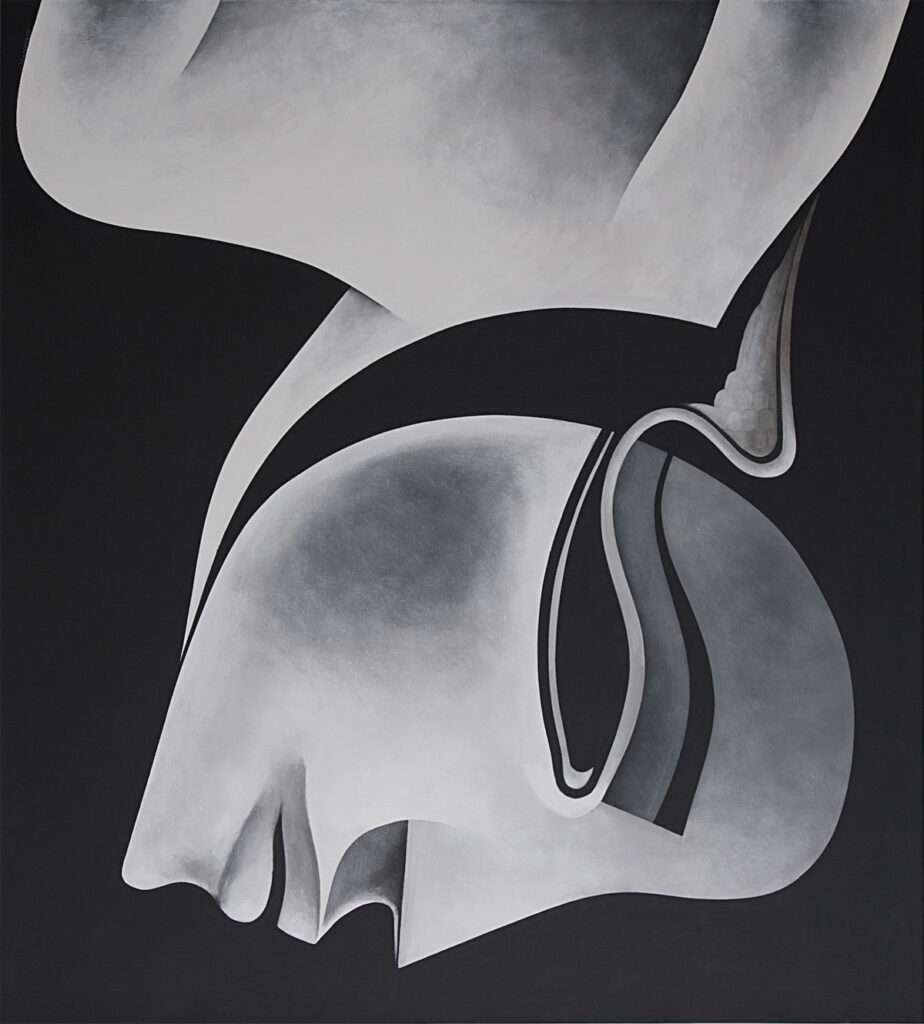
This concept could be projected on this urge for recurrence, but from another aspect, it could be like speaking about repeating different lives, to record moments far away in time. I believe we’re all the same when it comes to this, each one of us has this pressing need to keep repeating, and we’re all reliving and repeating the dreams and illusions of artists who lived before us. If we look at art through history, we find that it repeats itself, as we can see the recurrence of love, death, and war ideas, and life dialectic nature seems like an infinite circle; wars never ended, death didn’t, and love didn’t either.
Visual Artist and journalist, Member of Emirates Fine Art Society.She’s specialized in observing and tracking art and cultural movement in UAE, and covering events and art fairs and exhibitions.

